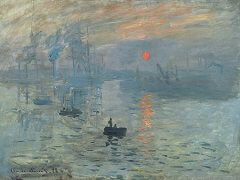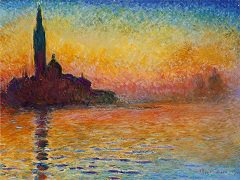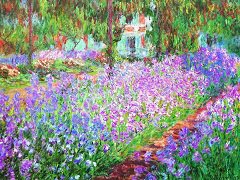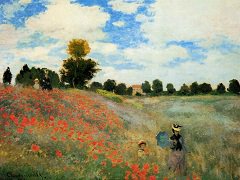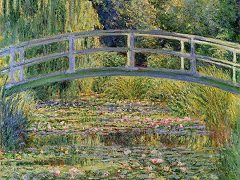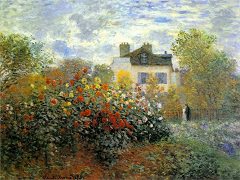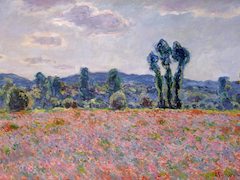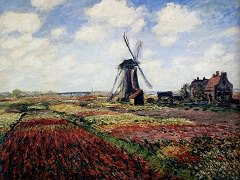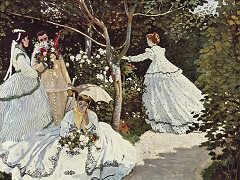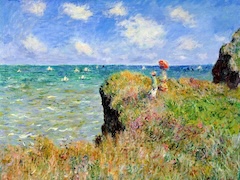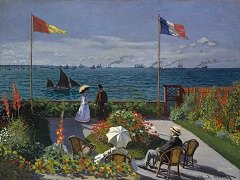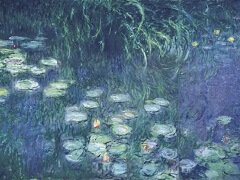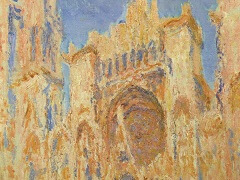Woman in a Green Dress - by Claude Monet
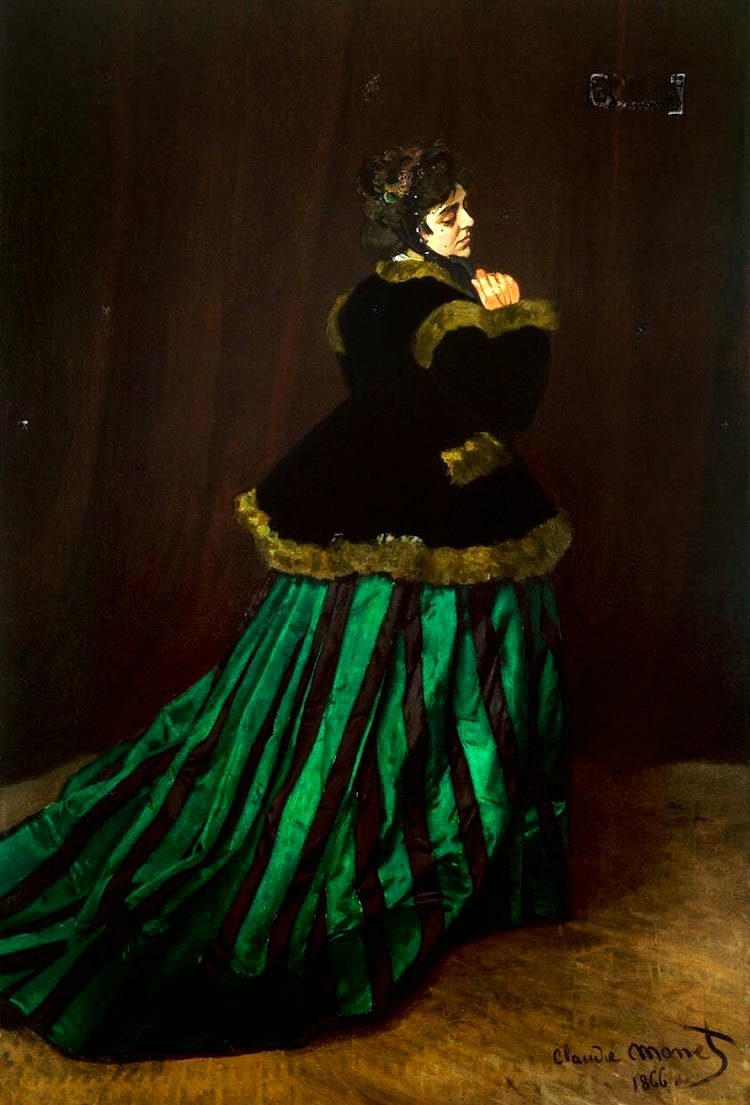
Gustave Courbet had been on influence on Monet, and the older artist had visited him at his Paris studio while he was painting Luncheon on the Grass. On seeing that the giant work would never be completed in time for the 1866 Salon, Courbet urged Monet to paint something 'quickly and well, in a single go,' so he would have something to submit.
Accordingly, Monet painted Camille, a dazzling figurative painting of his lover Camille Doncieux, who would become the first Mrs Monet, The work was allegedly done in a mere four days and was well received by the critics, being described as, 'the Parisian queen, the triumphant woman' in the magazine L'Artiste. It represents the epitome of a fashionable, avant-garde woman.
Most striking was Monet's combination of the traditional approach and modern subject in the painting. His treatment of the fabrics - the silk with its hint of stiffness and gleaming colors and the warm, organic fur - recoiled the portraiture of Old Masters, such as Johannes Vermeer, and Rembrandt van Rijn, amplified by the dark tonal treatment. Yet Camille herself is contemporary and convincingly real, an icon of modern womanhood.

